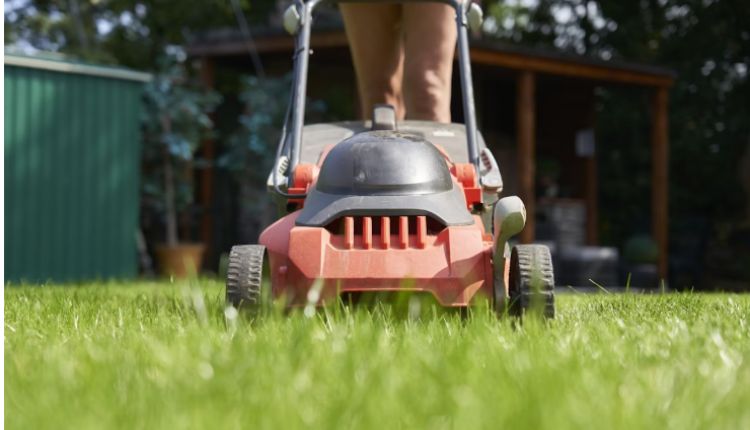Lawn mower belts are essential components that help transfer power from the engine to the blades and wheels, enabling your mower to operate smoothly and efficiently. Over time, like any mechanical part, these belts experience wear and stretching, which can affect your mower’s performance. If you’ve ever wondered how long lawn mower belts last or how much lawn mower belts stretch, understanding the factors behind belt wear and the signs of stretching can help you maintain your mower properly and avoid unexpected breakdowns.
https://unsplash.com/photos/a-person-is-mowing-the-lawn-8ZyHihe7XLw
How Long Do Lawn Mower Belts Typically Last?
One of the most common questions among mower owners is, ‘How long do riding lawn mower belts last?’ or ‘How long should a mower drive belt last?’ The answer depends on several factors, including the type of mower, usage frequency, operating conditions, and the quality of the belt itself. Generally, mower belts can last anywhere from 1,000 to 2,500 hours of use. For the average homeowner mowing a few times a month during the growing season, this typically translates to about 3 to 5 years of service.
Belts on riding lawn mowers tend to last longer than those on walk-behind models, as riding mower belts are often made with more durable materials designed to withstand greater loads and frequent engagement. However, even riding mower belts can wear out faster if exposed to harsh conditions, such as extreme heat, moisture, dirt, or improper tension.
If you’re shopping for replacements or want to ensure you get a belt that fits your mower perfectly, it’s helpful to consider trusted sources for parts. Many users find reliable options among replacement riding lawn mower belts, which offer a variety of belts suitable for different mower makes and models.
Do Lawn Mower Belts Stretch Over Time?
A common concern is whether mower belts stretch and how much that stretching affects performance. The simple answer is yes, lawn mower belts do stretch. This stretching occurs naturally as the belt is subjected to heat, tension, and repetitive use. Over time, the belt’s rubber or composite materials lose elasticity, causing the belt to elongate slightly.
While some stretching is regular, excessive stretching can lead to problems. A belt that’s too loose will slip on the pulleys, reducing power transfer efficiency and causing the blades to slow or stop. This slipping not only diminishes cutting performance but can also lead to increased wear on the belt and related components, such as bearings and pulleys.
Regular inspection helps identify when a belt has stretched beyond its proper limits. Signs of stretching include frequent slipping, unusual noises (like squealing), visible cracks, or frayed edges. Adjusting the belt tension can temporarily fix minor stretching, but if the belt continues to slip or shows physical wear, replacement is the best option.
Factors That Affect Belt Wear and Stretching
Several factors contribute to how quickly mower belts wear out and stretch:
- Operating Conditions: Mowing in dusty, wet, or muddy environments exposes belts to contaminants that accelerate wear.
- Tension Adjustment: Over-tightening a belt increases strain and accelerates stretching, while under-tightening causes slipping.
- Mowing Habits: Frequent, heavy mowing—such as cutting thick or tall grass—places a greater load on the belt.
- Belt Quality: Higher-quality belts made from durable materials resist stretching and cracking better than cheaper alternatives.
- Maintenance: Regular cleaning and timely replacement of worn parts extend belt life.
By understanding these factors, you can take steps to prolong the life of your mower belt and keep your equipment running smoothly.
How to Check and Maintain Your Lawn Mower Belt
Routine maintenance is crucial in preventing unexpected belt failure. Here are some tips to keep your mower belts in good condition:
- Inspect Regularly: Check the belt for cracks, fraying, glazing (shiny surfaces), or any signs of wear.
- Check Tension: Refer to your mower’s manual for proper belt tension specifications. Adjust the tension if the belt feels too loose or too tight.
- Clean Pulleys: Dirt and debris on pulleys can cause the belt to slip. Clean pulleys regularly.
- Replace When Needed: If the belt shows significant wear or stretching, replace it promptly to prevent further damage.
Conclusion
Knowing how long mower belts last and understanding the natural stretching process helps you maintain your lawn mower effectively. Belts are vital for smooth operation, and timely replacement prevents costly repairs and downtime. While belts do stretch over time, regular checks and proper maintenance can maximize their lifespan.
When it’s time to replace your mower belts, consider trusted suppliers such as udcparts.com for a reliable selection that fits your mower’s needs. Keeping your mower in top shape ensures a healthy, well-manicured lawn season after season.






